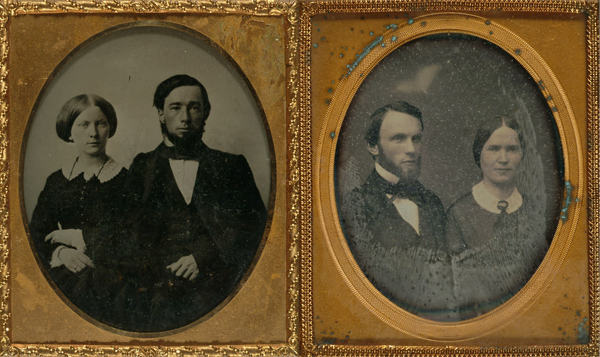
Congregationalists (called „Evangelicals“ in Bulgaria, the word „Protestant“ is not used [3] ) were among the first Protestant missionaries to the Ottoman Empire and to the Northwestern part of the European Ottoman Empire which is now Bulgaria, where their work to convert these Orthodox Christians was unhampered by the death penalty imposed by the Ottomans on Muslim converts to Christianity.[4] These missionaries were significant contributors to the Bulgarian National Revival movement. Today, Protestantism in Bulgaria represents the third largest religious group, behind Orthodox and Muslim. Missionaries from the United States first arrived in 1857–58, sent to Istanbul by the American Board of Commissioners for Foreign Missions (ABCFM). The ABCFM was proposed in 1810 by the Congregationalist graduates of Williams College, MA, and was chartered in 1812 to support missions by Congregationalists, Presbyterian (1812–1870), Dutch-Reformed (1819–1857) and other denominational members.[5] The ABCFM focused its efforts on southern Bulgaria and the Methodist Church on the region north of the Balkan Mountains (Stara Planina, or „Old Mountains“). In 1857, Cyrus Hamlin and Charles Morse established three missionary centres in southern Bulgaria – in Odrin (Edirne, former capital city of the Ottoman Empire, in Turkey), Plovdiv and Stara Zagora. They were joined in 1859 by Russian born naturalized America Frederic Flocken in 1859.[6] American Presbyterian Minister Elias Riggs commissioned, supported and edited the work of Bulgarian monk Neofit Rilski to create a Bible translations into Bulgarian which was then distributed widely in Bulgaria in 1871 and thereafter. This effort was supported by Congregationalist missionary Albert Long, Konstantin Fotinov, Hristodul Sechan-Nikolov and Petko Slaveikov.[7] Reportedly, 2,000 copies of the newly translated Bulgarian language New Testament were sold within the first two weeks.
Congregational churches were established in Bansko, Veliko Turnovo, and Svishtov between 1840 to 1878, followed by Sofia in 1899. By 1909, there were 19 Congregational churches, with a total congregation of 1,456 in southern Bulgaria offering normal Sunday services, Sunday schools for children, biblical instruction for adults; as well as women’s groups and youth groups. Summer Bible schools were held annually from 1896 to 1948.[8]
Congregationalists led by Dr James F. Clarke opened Bulgaria’s first Protestant primary school for boys in Plovdiv in 1860, followed three years later by a primary school for girls in Stara Zagora. In 1871 the two schools were moved to Samokov and merged as the American College, now considered the oldest American educational institution outside the US. In 1928, new facilities were constructed in Sofia, and the Samokov operation transferred to the American College of Sofia (ACS), now operated at a very high level by the Sofia American Schools, Inc.[9]
In 1874, a Bible College was opened in Ruse, Bulgaria for people wanting to become pastors. At the 1876 annual conference of missionaries, the beginning of organizational activity in the country was established. The evangelical churches of Bulgaria formed a united association in 1909.[10]
The missionaries played a significant role in assisting the Bulgarians throw off “the Turkish Yoke”, which included publishing the magazine Zornitsa (Зорница, „Dawn“), founded in 1864 by the initiative of Riggs and Long.[11] Zornitsa became the most powerful and most widespread newspaper of the Bulgarian Renaissance.[12] A small roadside marker on Bulgarian Highway 19 in the Rila Mountains, close to Gradevo commemorates the support given the Bulgarian Resistance by these early Congregationalist missionaries.
On 3 September 1901 Congregationalist missionaries came to world attention in the Miss Stone Affair when missionary Ellen Maria Stone,[13] of Roxbury, Massachusetts, and her pregnant fellow missionary friend Macedonian-Bulgarian Katerina Stefanova–Tsilka, wife of an Albanian Protestant minister, were kidnapped while traveling between Bansko and Gorna Dzhumaya (now Blagoevgrad), by an Internal Macedonian-Adrianople Revolutionary Organization detachment led by the voivoda Yane Sandanski and the sub-voivodas Hristo Chernopeev and Krǎstyo Asenov and ransomed to provide funds for revolutionary activities. Eventually, a heavy ransom (14,000 Ottoman lira (about US$62,000 at 1902 gold prices or $5 million at 2012 gold prices) raised by public subscription in the USA was paid on 18 January 1902 in Bansko and the hostages (now including a newborn baby) were released on 2 February near Strumica—a full five months after being kidnapped. Widely covered by the media at the time, the event has been often dubbed „America’s first modern hostage crisis“.
The Bulgarian royal house, of Catholic German extraction, was unsympathetic to the American inspired Protestants, and this mood became worse when Bulgaria sided with Germany in WWI and WWII.[14] Matters became much worse when the Bulgarian Communist Party took power in 1944. Like the Royal Family, it too saw Protestantism closely linked to the West and hence more politically dangerous than traditional Orthodox Christianity. This prompted repressive legislation in the form of „Regulations for the Organization and Administration of the Evangelical Churches in the People’s Republic of Bulgaria“ and resulted in the harshest government repression, possibly the worst in the entire Eastern Bloc, intended to extinguish Protestantism altogether. Mass arrests of pastors (and often their families), torture, long prison sentences (including four life sentences) and even disappearance were common. Similar tactics were used on parishioners. In fifteen highly publicized mock show-trials between 8 February and 8 March 1949, all the accused pastors confessed to a range of charges against them, including treason, spying (for both the US and Yugoslavia (!)), black marketing, and various immoral acts. State appointed pastors were foist on surviving congregations. As late as the 1980s, imprisonment and exile were still employed to destroy the remaining Protestant churches. The Congregationalist magazine „Zornitsa“ was banned; Bibles became unobtainable.[15] As a result, the number of Congregationalists is small, and estimated by Paul Mojzes in 1982 to number about 5,000, in 20 churches. (Total Protestants in Bulgaria were estimated in 1965 to have been between 10,000 and 20,000.)[16] More recent estimates indicate enrollment in Protestant („Evangelical“ or „Gospel“) churches of between 100,000 and 200,000,[17] presumably reflecting the success of more recent missionary efforts of evangelical groups. The United Church of Christ has been described as „the historic continuation of the Congregational churches“.[18]

Последни коментари